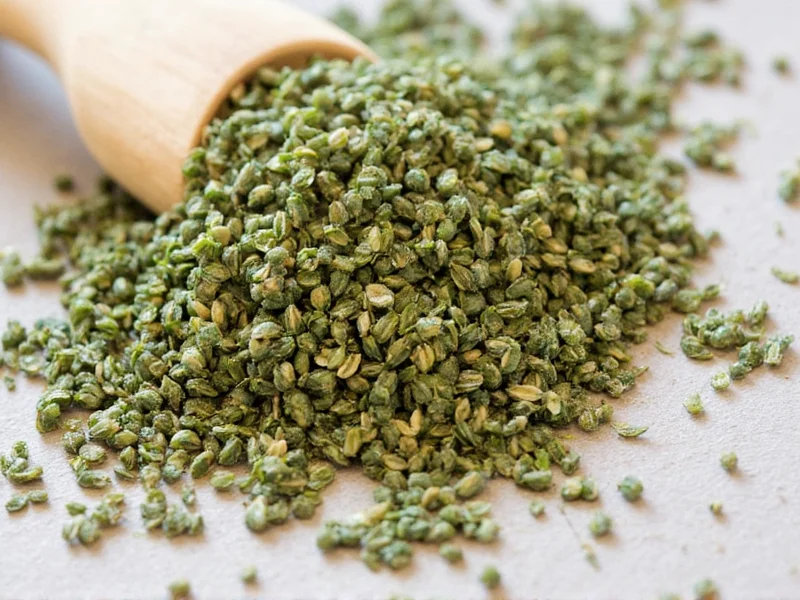When you're in the middle of cooking and realize you've run out of oregano, knowing reliable alternatives can save your recipe. This guide explores the most effective oregano substitutes based on flavor profiles, culinary applications, and proper substitution ratios to maintain your dish's intended taste.
Understanding Oregano's Unique Flavor Profile
Oregano delivers a distinctive earthy, slightly bitter, and aromatic flavor with warm undertones of pepper and mint. This versatile herb plays a starring role in Mediterranean, Italian, and Mexican cuisines. When seeking what is a good substitute for oregano, consider both its flavor characteristics and how it functions in your specific recipe.
Fresh oregano offers a brighter, more floral note compared to dried oregano, which concentrates the earthy, robust qualities. This distinction matters when selecting substitutes, as some alternatives work better with fresh applications while others shine in dried form.
Top 5 Oregano Substitutes Ranked by Effectiveness
1. Marjoram: The Closest Flavor Match
Marjoram shares oregano's botanical family but delivers a sweeter, milder flavor with subtle citrus notes. Many professional chefs consider marjoram the best oregano substitute for Italian dressing and tomato-based sauces. Use it in a 1:1 ratio for most applications, though you may want to increase by 25% for robust dishes like pizza or meat sauces.
2. Thyme: The Earthy Alternative
Thyme provides earthy, slightly floral notes that work well as an oregano alternative for greek recipes and roasted vegetables. Its more pronounced minty character means you should use less than the recipe specifies for oregano. For every 1 teaspoon of dried oregano, use 3/4 teaspoon of dried thyme. Fresh thyme requires a 2:1 substitution ratio.
3. Italian Seasoning: The Convenient Blend
Most Italian seasoning blends contain oregano along with basil, rosemary, and thyme, making them an excellent ready-made substitute. When you need a quick oregano replacement for pizza or pasta sauce, use Italian seasoning in a 1:1 ratio. Check the blend's ingredients, as proportions vary between brands, which affects the final flavor.
4. Basil: The Sweet Option
Basil offers a sweeter, more floral profile that works surprisingly well as an oregano substitute in tomato-based dishes. Use 1.5 times the amount of dried basil for dried oregano, as its flavor is less intense. Fresh basil requires a 2:1 substitution ratio. This alternative shines in what is a good substitute for oregano in pizza applications where a sweeter herb profile complements tomato sauce.
5. Rosemary: The Bold Choice
Use rosemary sparingly as an oregano alternative, as its pine-like intensity can overwhelm dishes. For every teaspoon of oregano, use just 1/4 to 1/2 teaspoon of dried rosemary. This substitution works best in hearty meat dishes and roasted vegetables but fails in delicate applications like salad dressings.
Substitution Ratios Reference Guide
| Original Ingredient | Marjoram | Thyme | Italian Seasoning | Basil |
|---|---|---|---|---|
| 1 tsp dried oregano | 1 tsp dried | 3/4 tsp dried | 1 tsp blend | 1.5 tsp dried |
| 1 tbsp fresh oregano | 1 tbsp fresh | 2 tsp fresh | 1 tbsp blend | 2 tbsp fresh |
| Best for | Tomato sauces, dressings | Greek dishes, roasted meats | Pizza, pasta sauces | Tomato-based dishes, pizza |
Cuisine-Specific Substitution Recommendations
Italian Cuisine
For authentic Italian dishes, marjoram stands as the premier oregano replacement. Its similar flavor profile works perfectly in what is a good substitute for oregano in pizza applications and pasta sauces. When making tomato-based sauces, add marjoram toward the end of cooking to preserve its delicate flavor.
Greek and Mediterranean Dishes
Thyme emerges as the superior choice for Greek recipes requiring oregano. Its earthy notes complement lemon and olive oil-based dishes. For tzatziki or Greek salads, use fresh thyme at a 2:1 ratio to replace fresh oregano. In souvlaki marinades, dried thyme at 3/4:1 ratio delivers excellent results.
Mexican Cuisine
When substituting oregano in Mexican dishes, opt for Mexican oregano if available, as it has a distinct citrusy flavor different from Mediterranean oregano. Without it, a blend of marjoram and a pinch of cumin creates the closest approximation. For salsas and bean dishes, use this blend at a 1:1 ratio.
When Substitution Doesn't Work
Certain dishes rely so heavily on oregano's unique flavor that substitutes fall short. Traditional Greek ladolemono sauce, authentic Neapolitan pizza, and some Italian meatball recipes require oregano's specific profile. In these cases, consider adjusting your menu rather than compromising the dish's authenticity.
Creating Your Own Oregano Substitute Blend
For the most versatile oregano alternative, make this simple blend:
- 2 parts dried marjoram
- 1 part dried thyme
- 1 part dried basil
- Small pinch of dried rosemary (optional)
Mix thoroughly and store in an airtight container. Use this blend in a 1:1 ratio for dried oregano in most recipes. This custom blend works particularly well as an oregano substitute for italian dressing and tomato-based sauces.
Maximizing Flavor with Substitutes
Add dried herb substitutes early in the cooking process to allow flavors to develop, while fresh herb alternatives should join the dish during the final 5-10 minutes of cooking. For what is a good substitute for oregano in salad dressings, always use fresh alternatives and adjust quantities downward by 25% to prevent overpowering delicate flavors.











 浙公网安备
33010002000092号
浙公网安备
33010002000092号 浙B2-20120091-4
浙B2-20120091-4